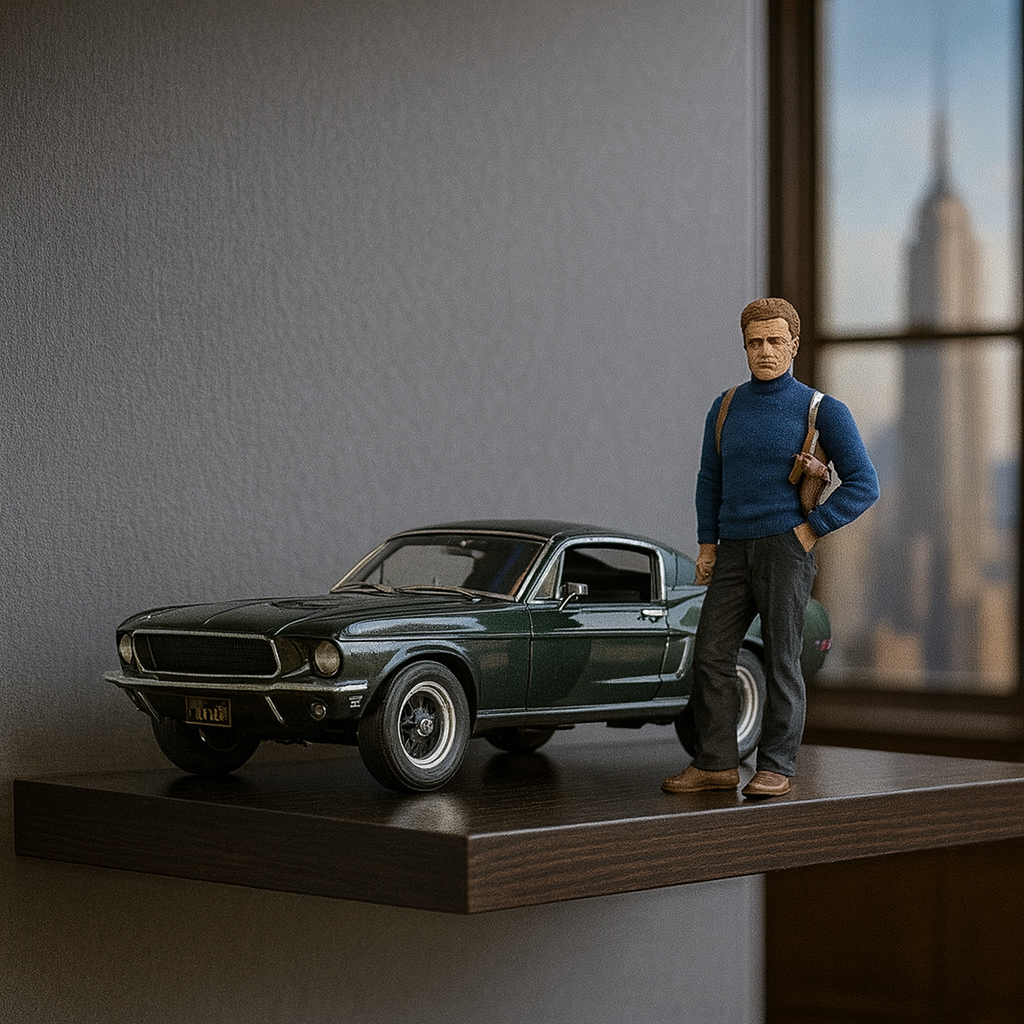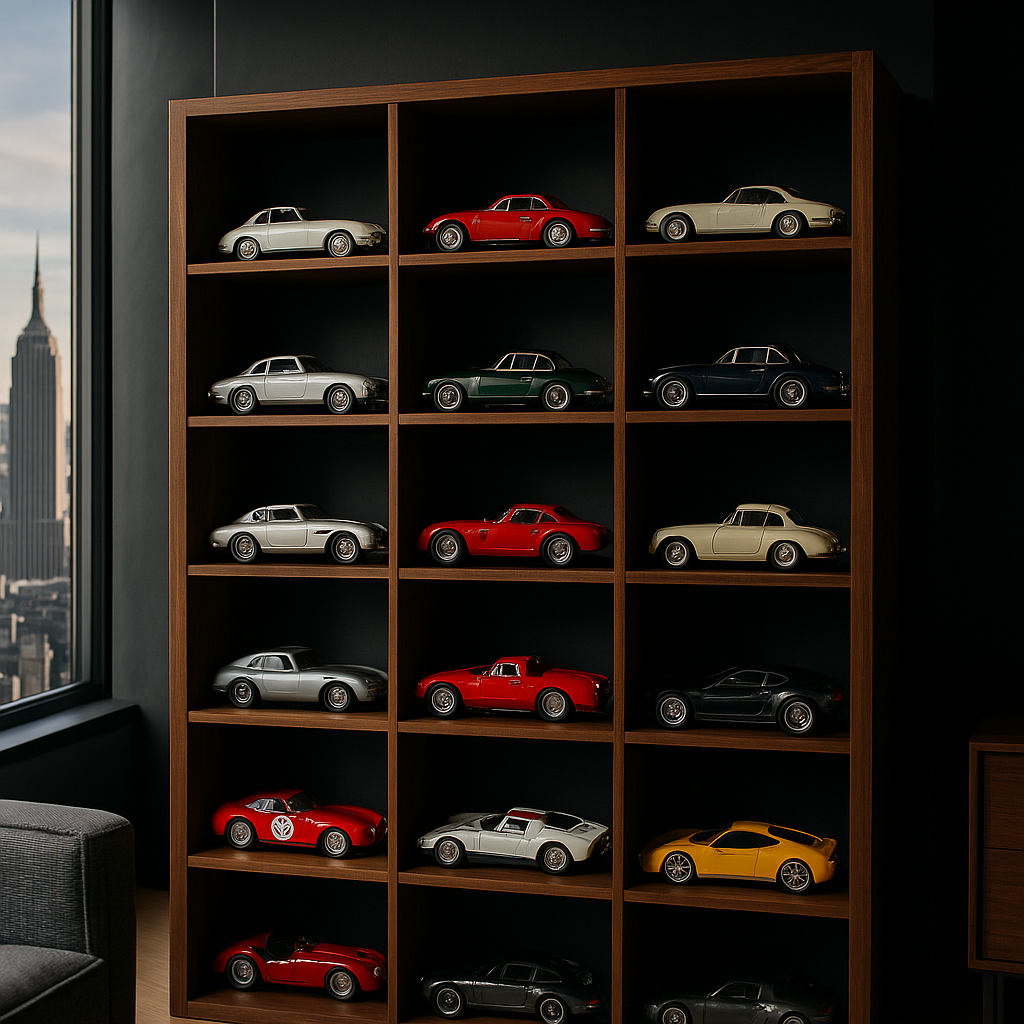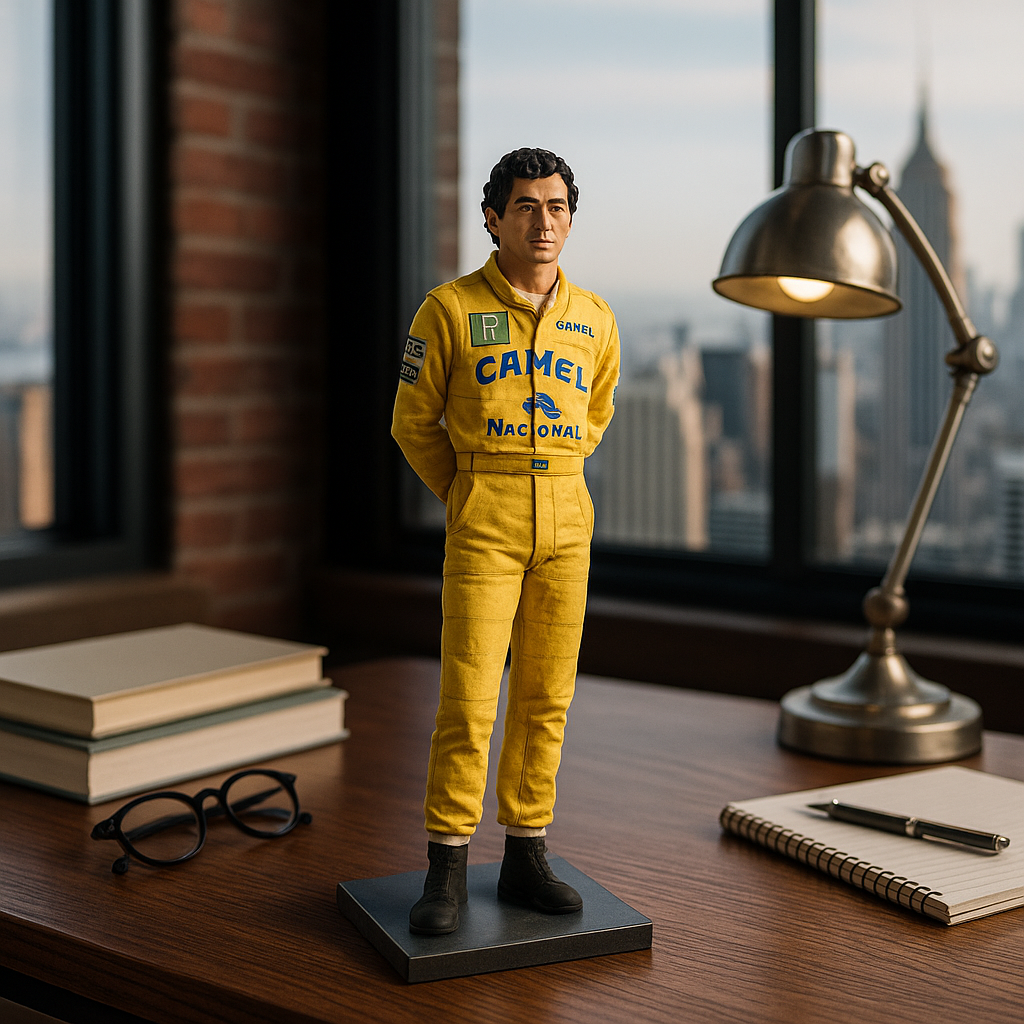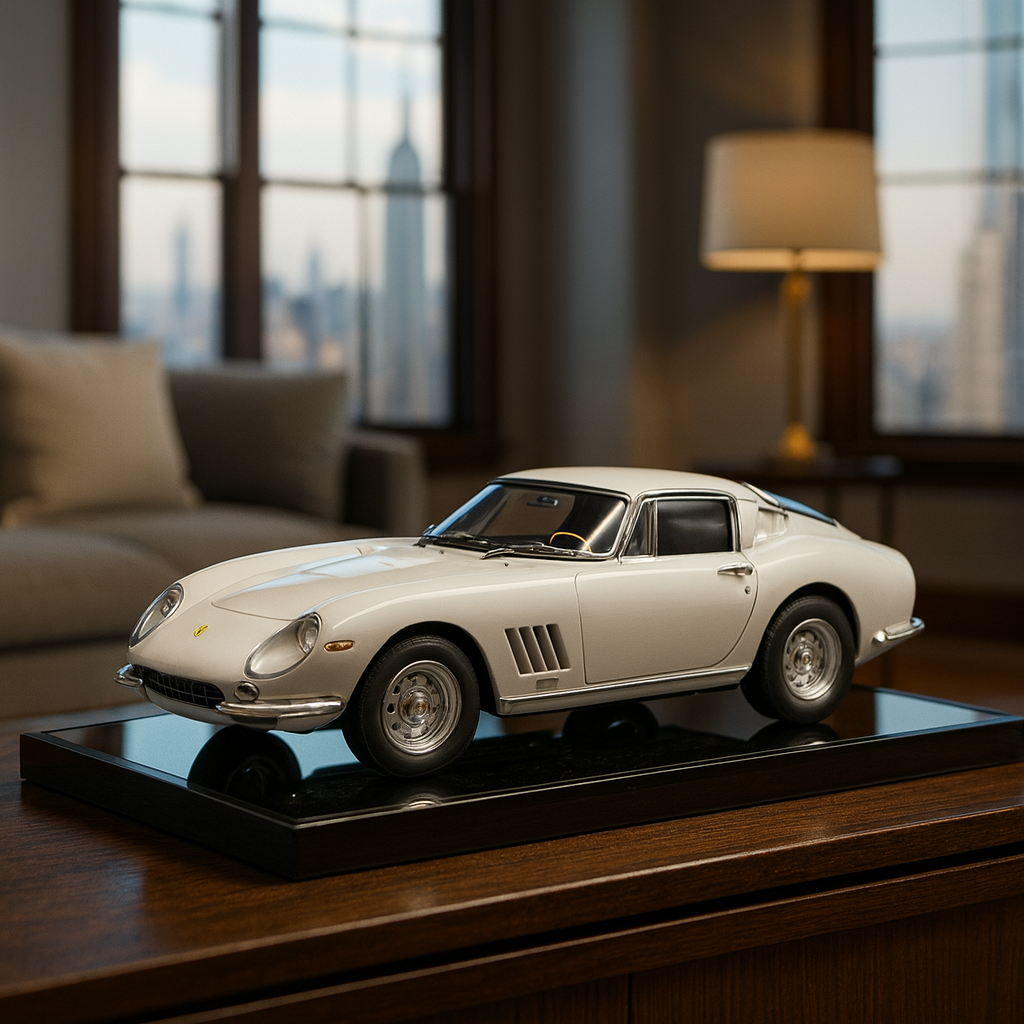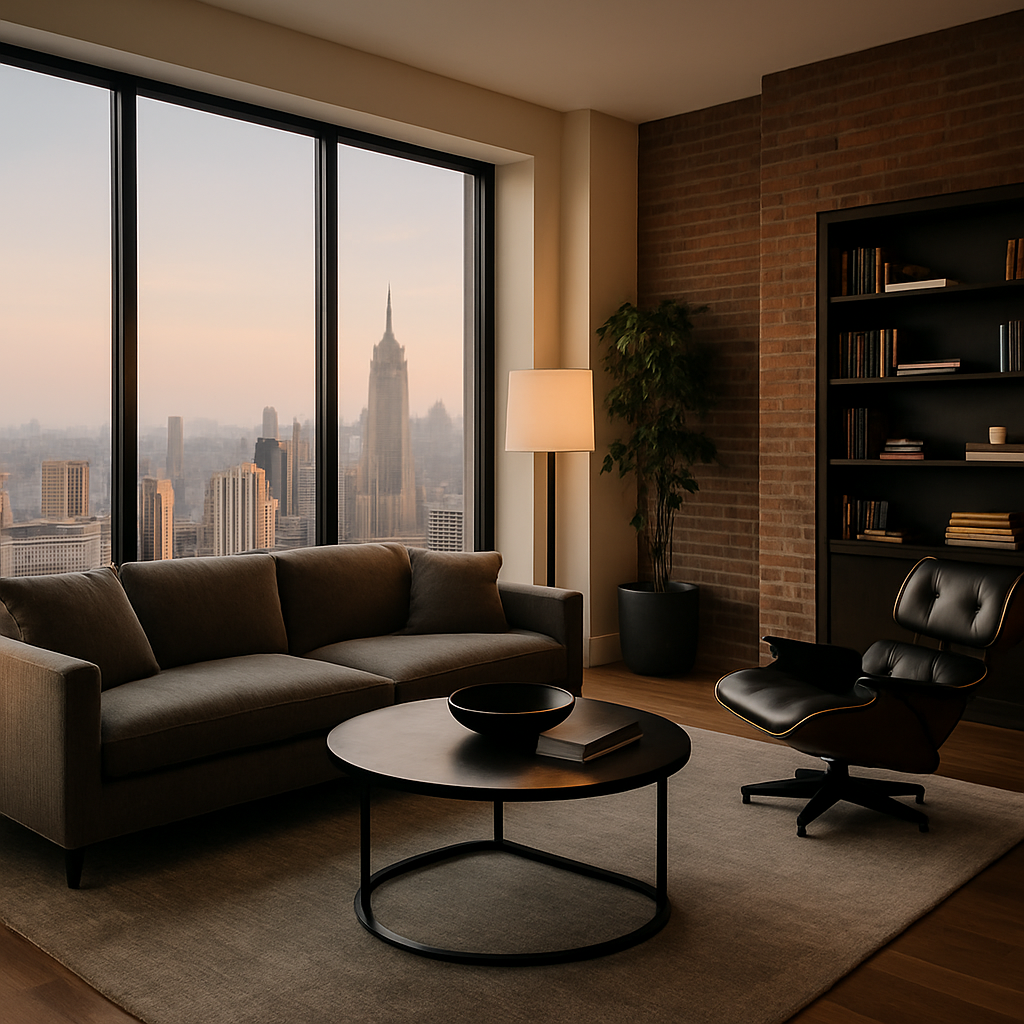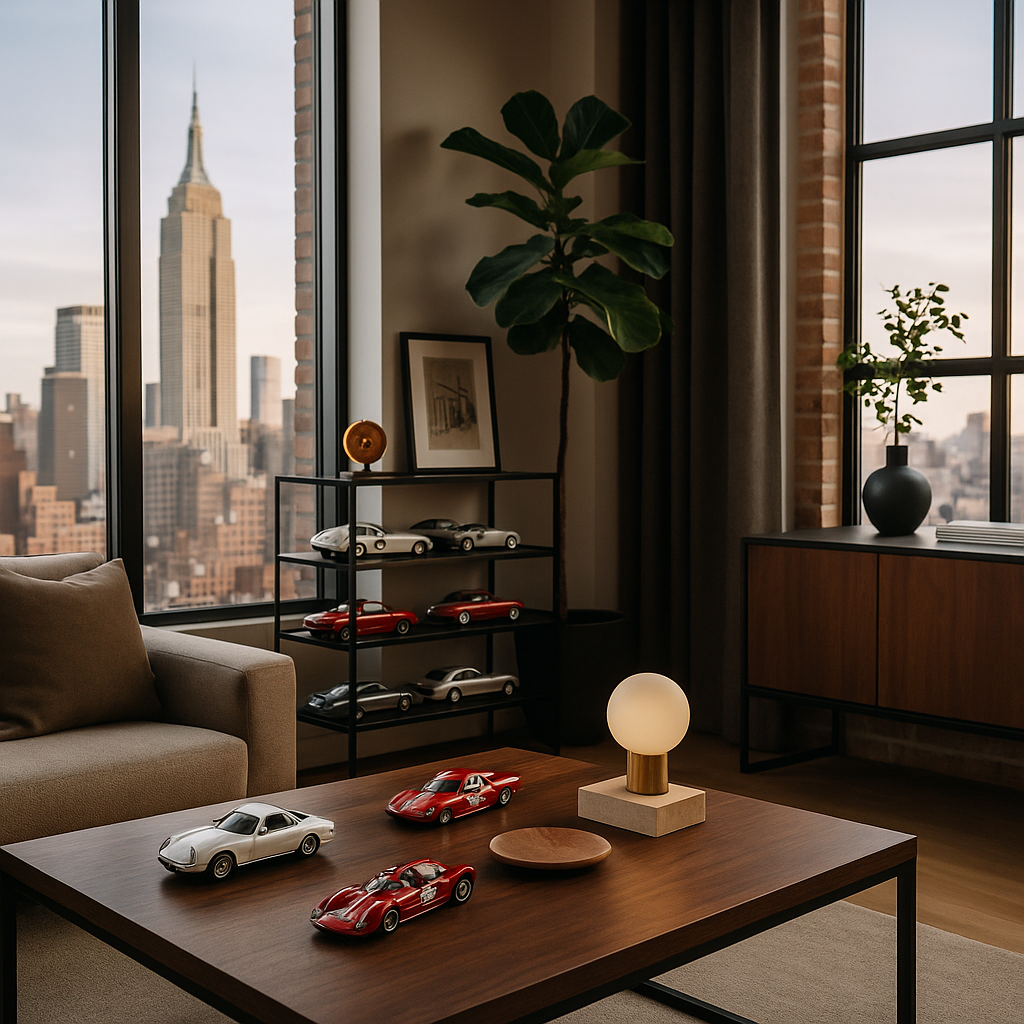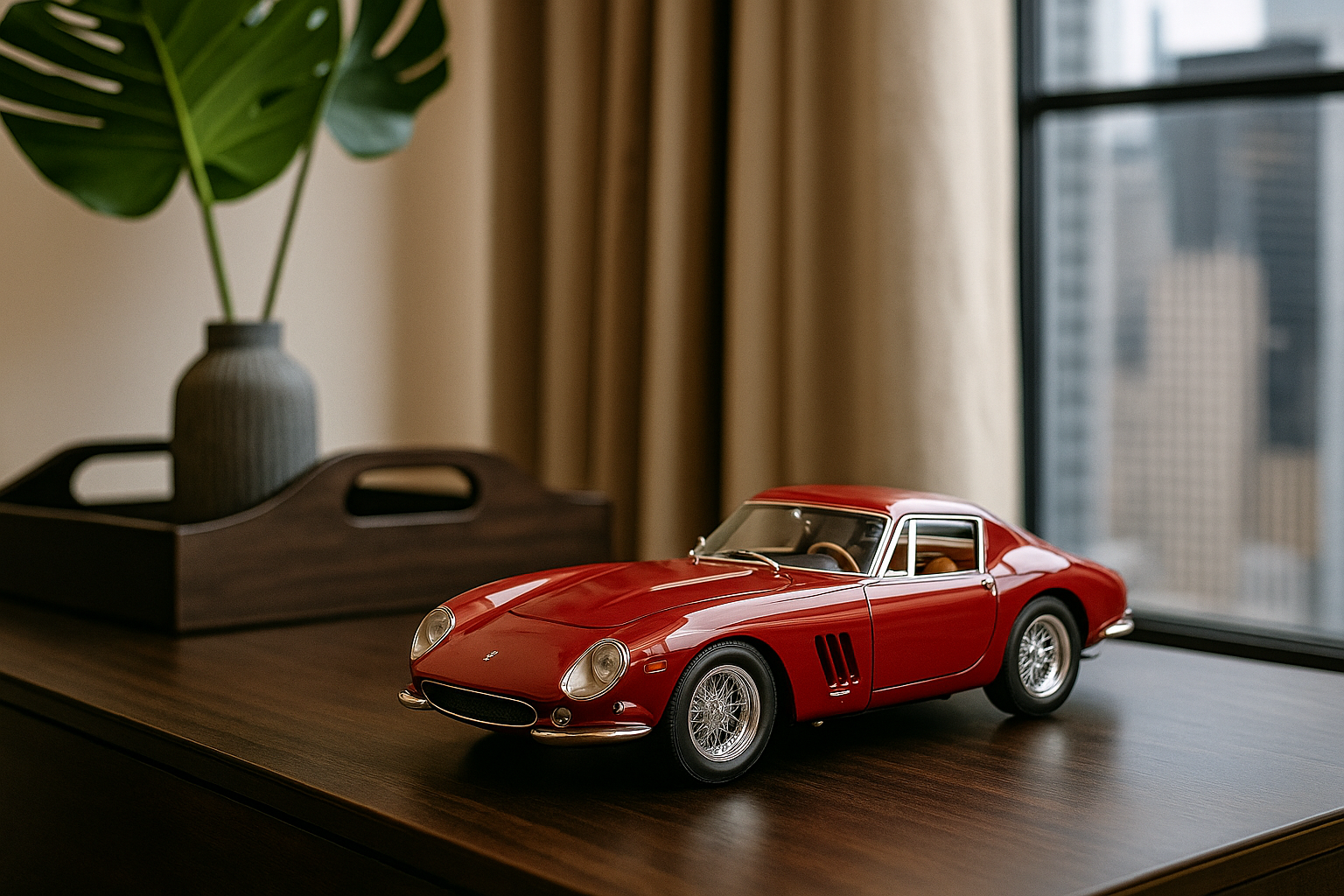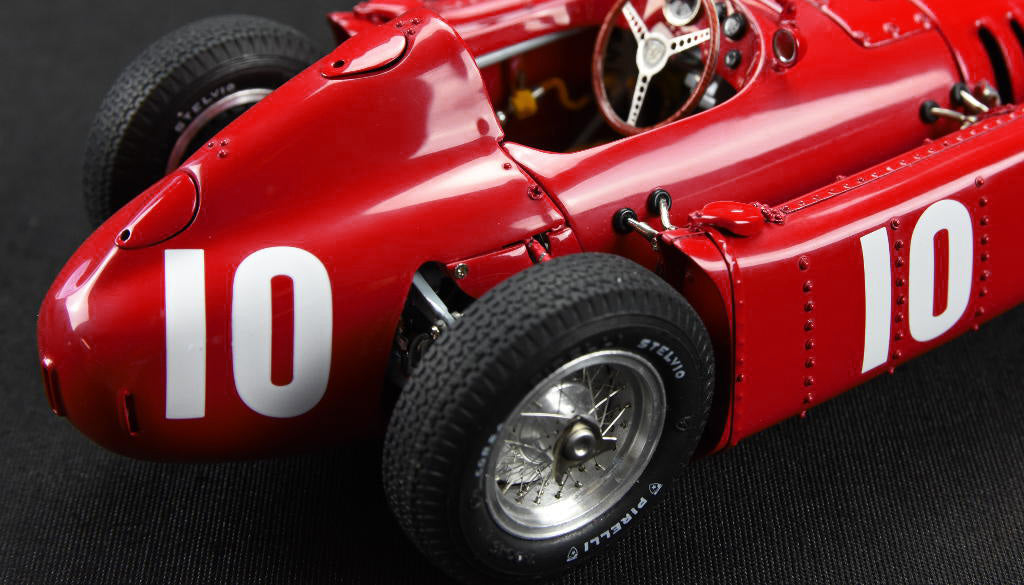
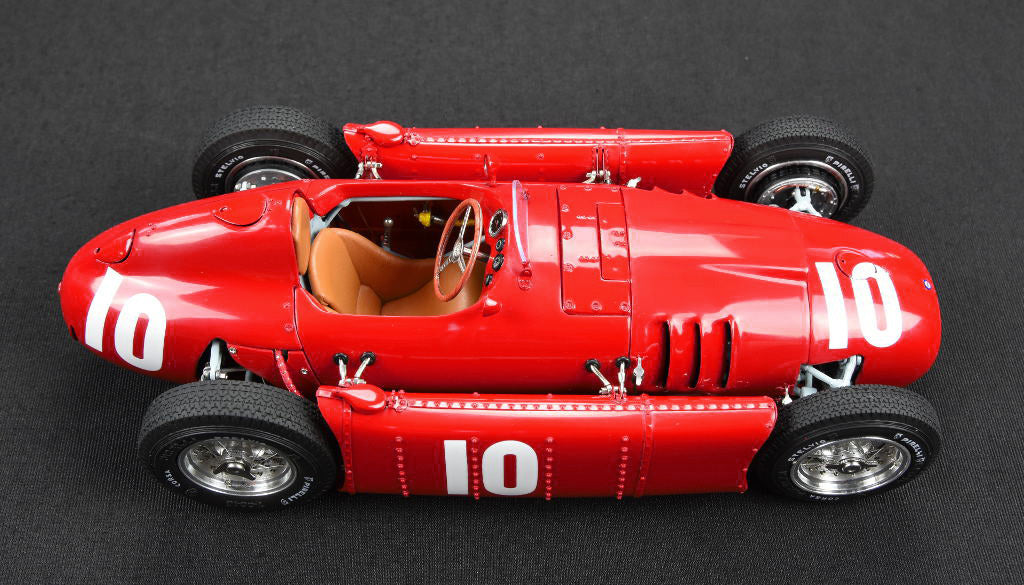
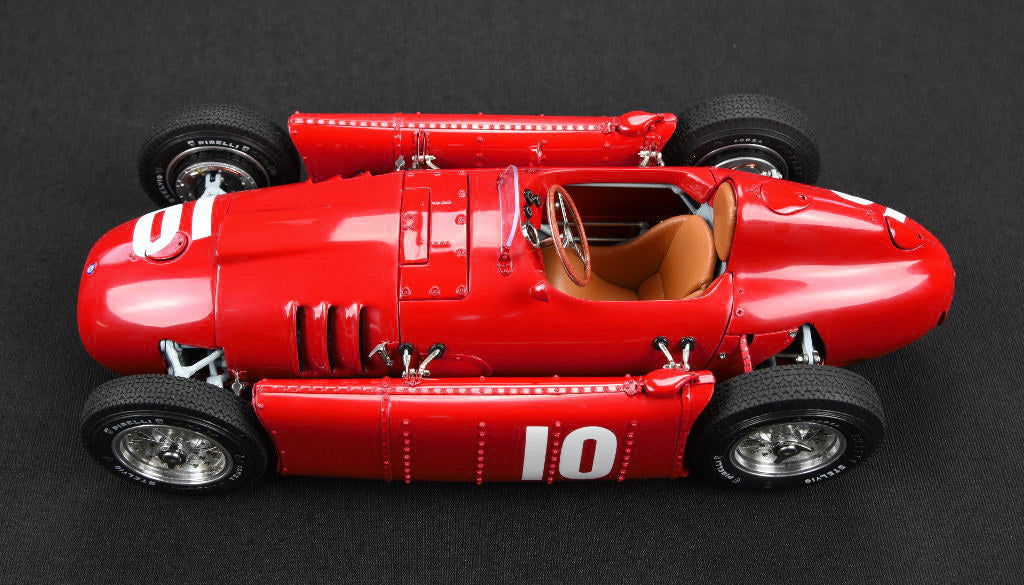
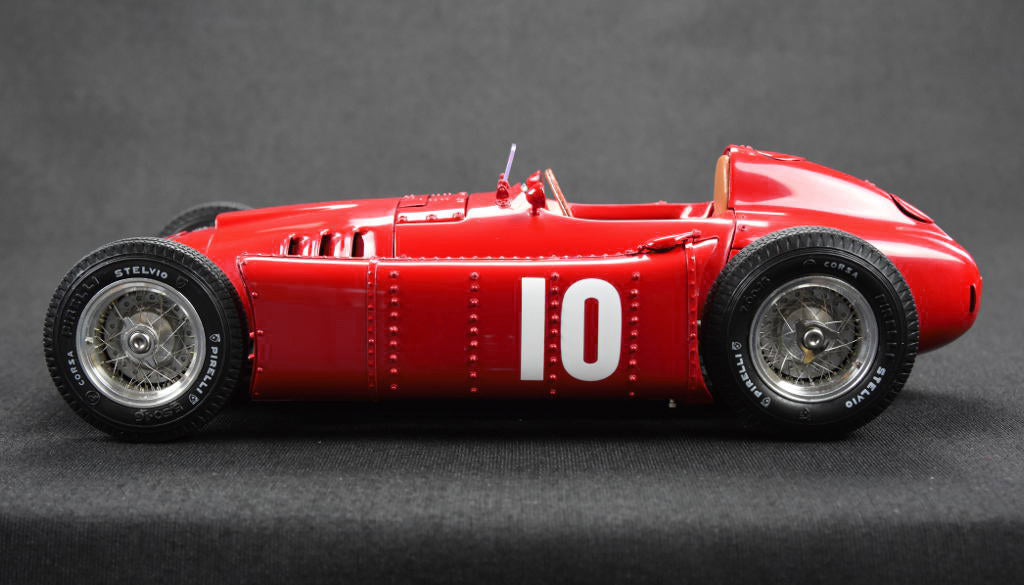
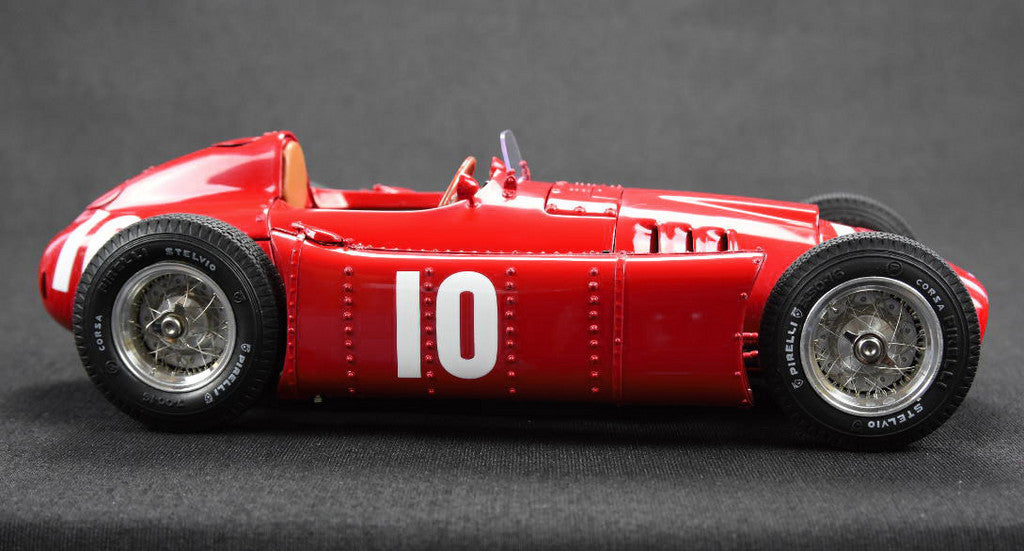

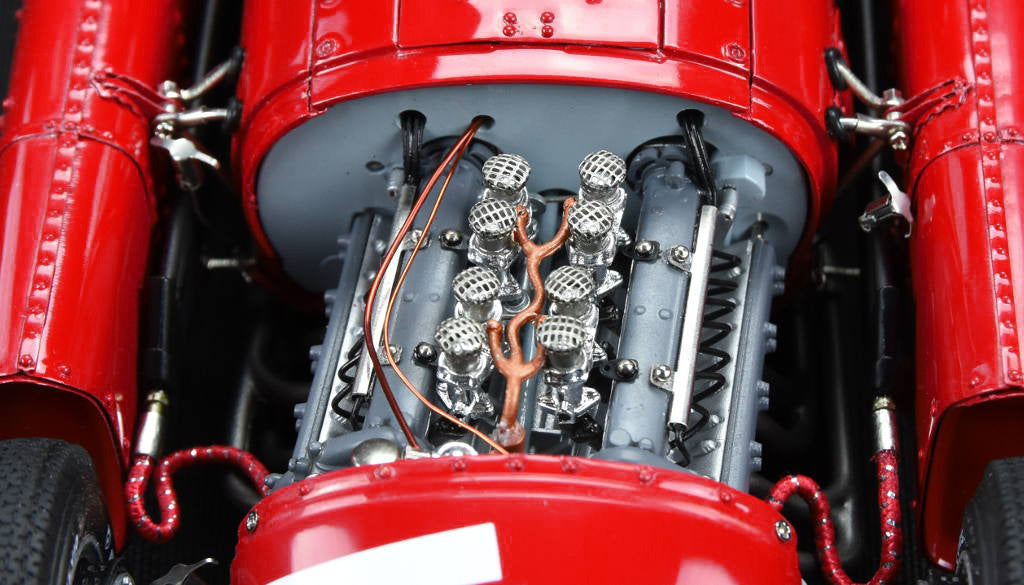
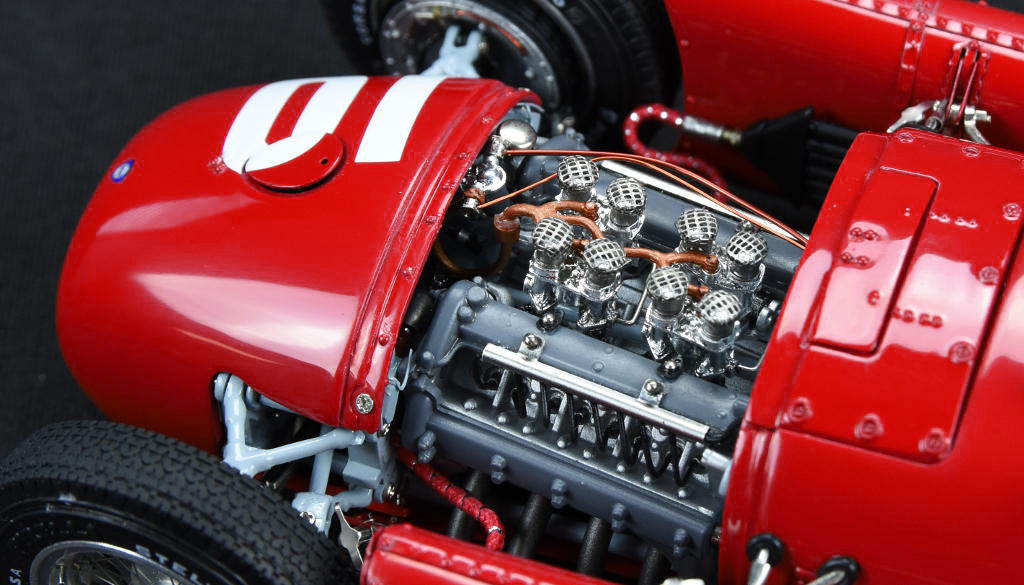
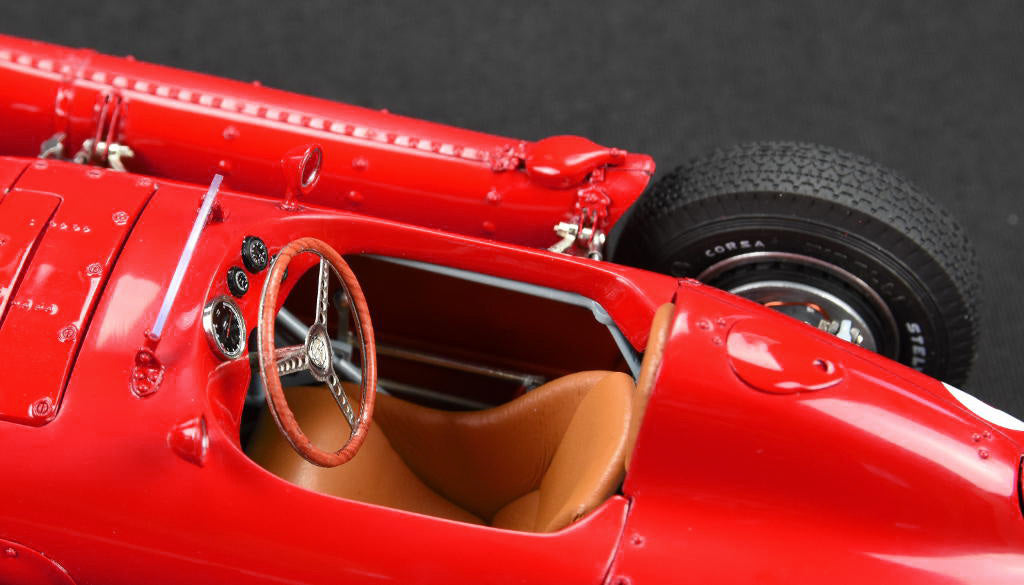
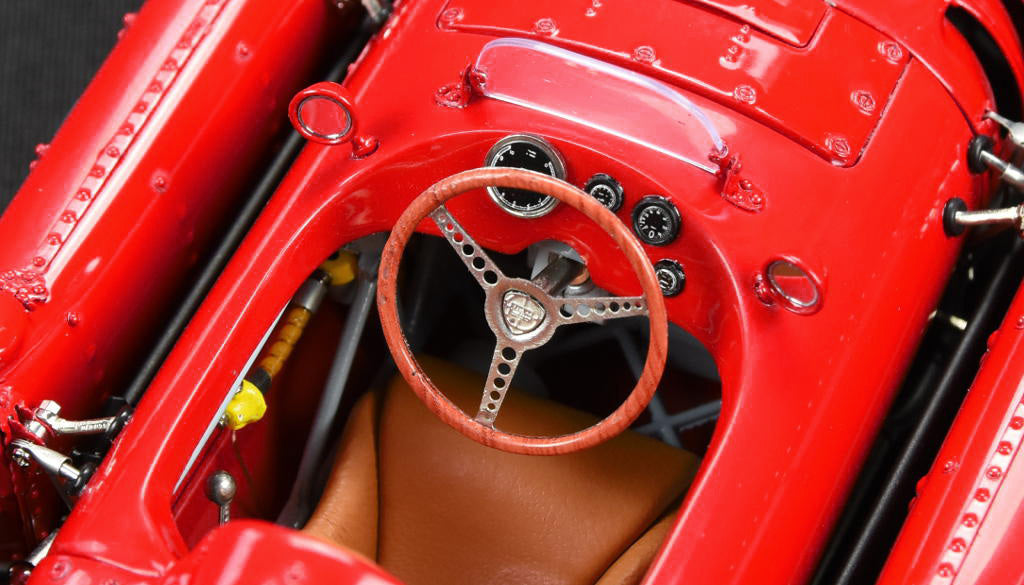

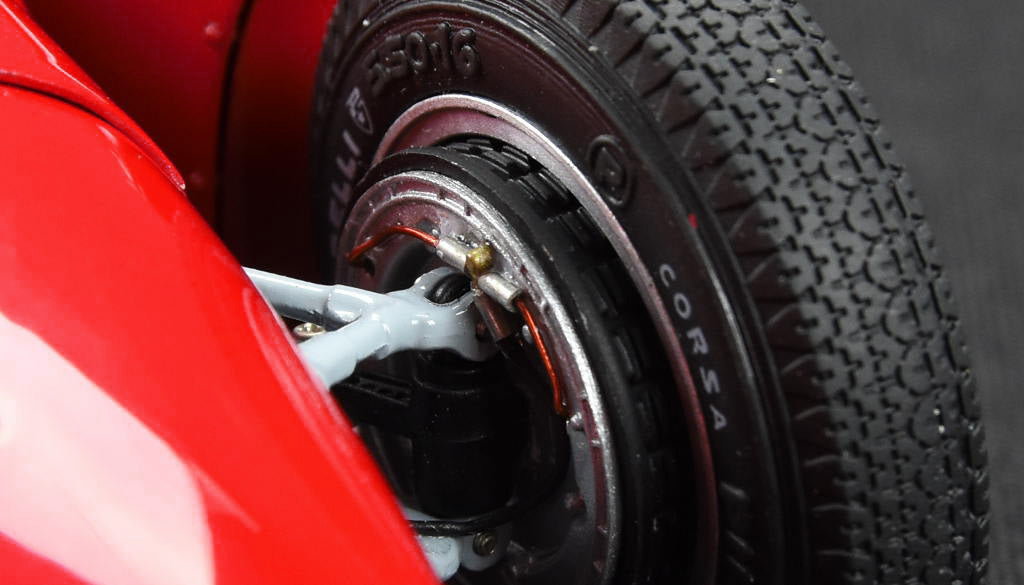
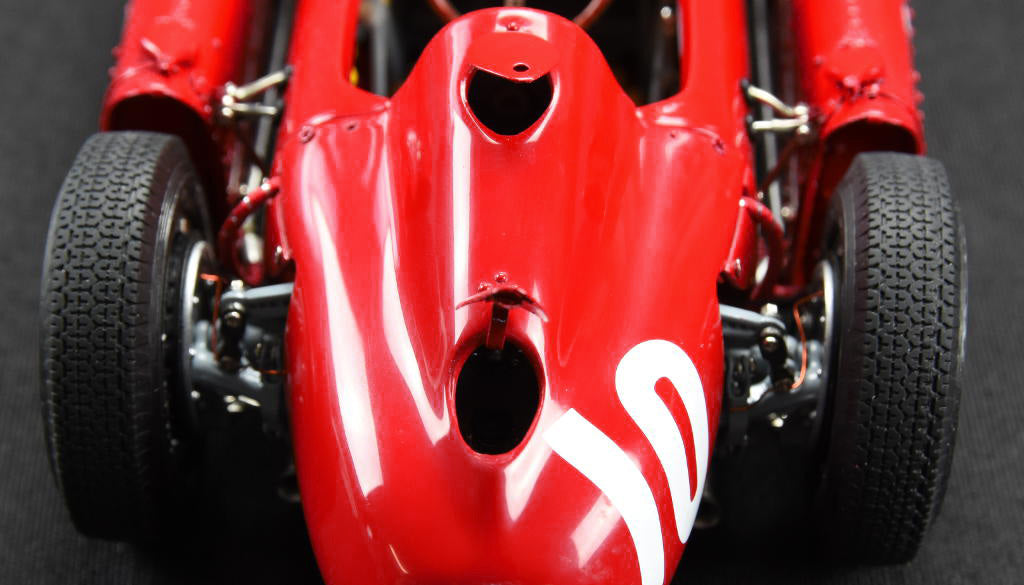
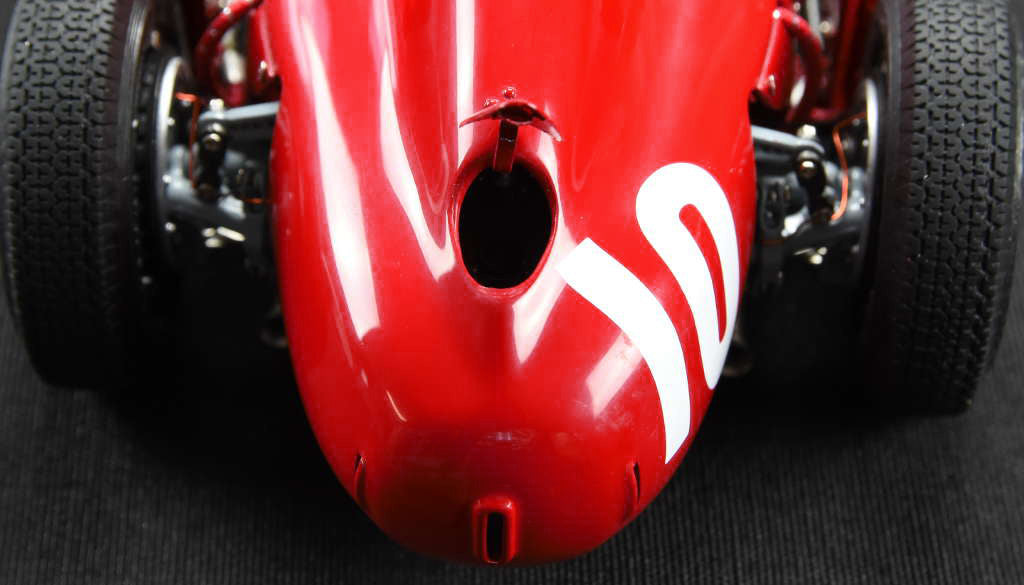
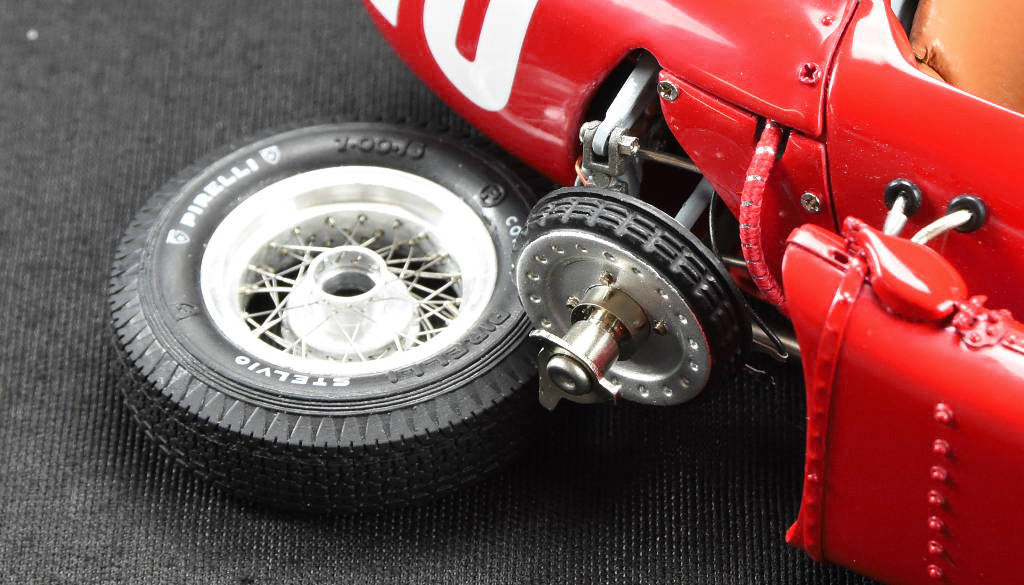
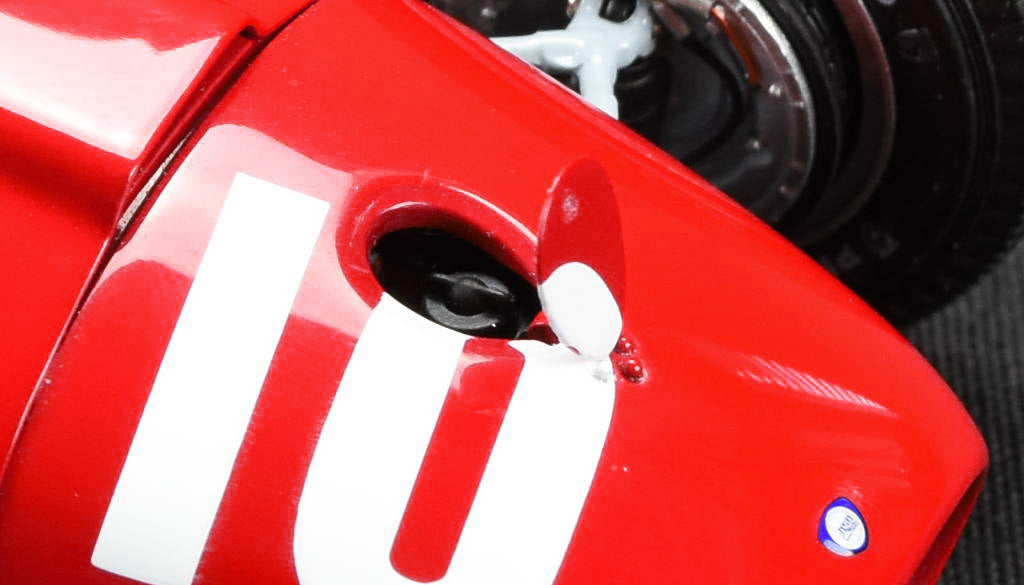
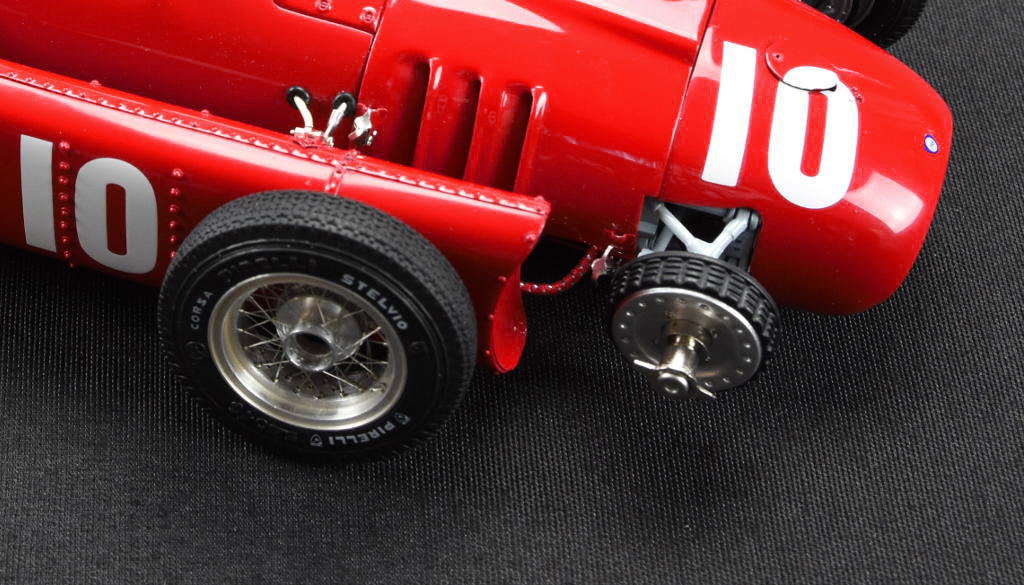
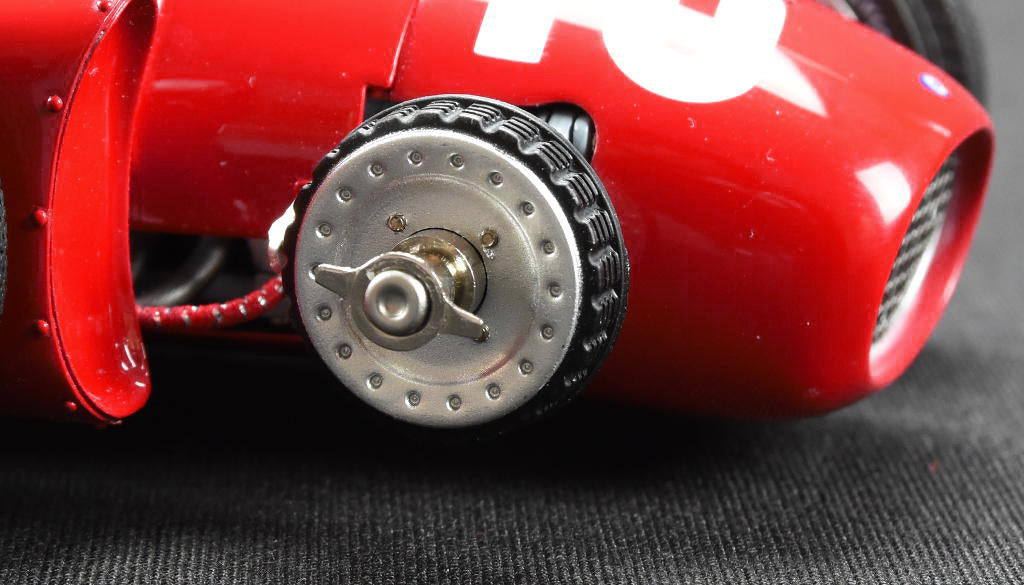
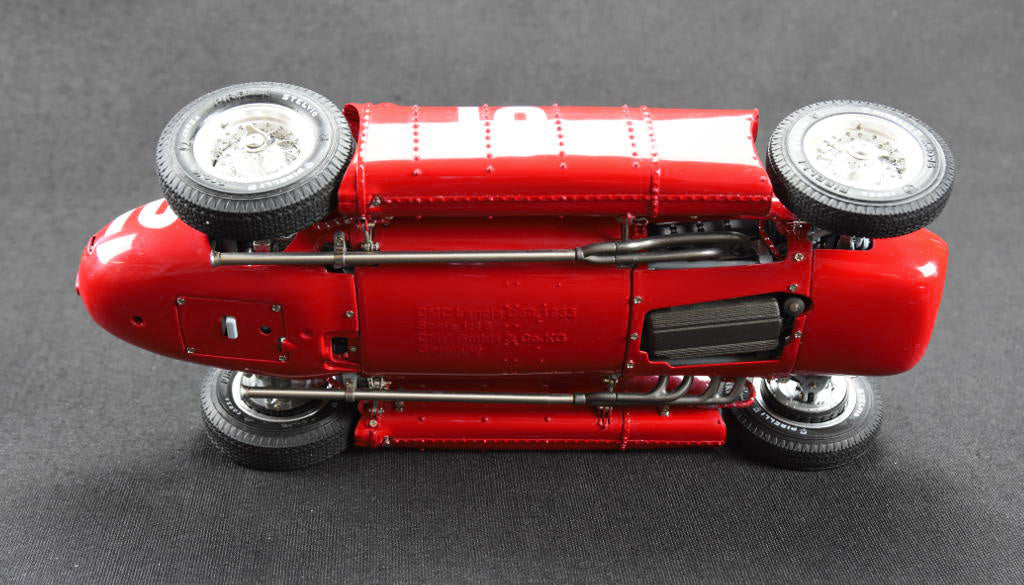
Lancia D50 #10 GP Pau Eugenio Castellotti CMC M-178 LE 1000

Description
Eugenio Castellotti was Scuderia Lancia's youngest driver. Like Ascari and Villoresi, he joined the newly founded Grand Prix racing team in 1954. Due to the numerous design-related delays with the revolutionary prestige D50 project, the team only participated in the last race of the 1954 season. The drivers used the time in between to compete for Scuderia Lancia in other series. Ascari won the 1954 Mille Miglia, Villoresi won the Race of Portugal, and Castellotti took third place in the Tourist Trophy with Manzon. The long-awaited first official outing of the Lancia Grand Prix cars was anything but successful – at that time, the D50 was neither technically sophisticated nor reliable enough over the distance of a Grand Prix.
The sweltering battle at the Argentinian Grand Prix at the beginning of 1955 was an ordeal for both man and machine. Once again, none of the Scuderia Lancia cars finished the finish line, and the entire team was thoroughly devastated by the depressing situation. Nevertheless, giving up was out of the question for the proud Gianni Lancia. A renewed consolidation of forces resulted in victories in the two Grand Prixs in Turin and Pau. These were a much-needed glimmer of hope for the costly Formula 1 project, even if they didn't yield any World Championship points.
The Pau Grand Prix is a motor race held annually in the French Pyrenees region. It is not part of the Formula 1 World Championship.
In 1955, the race event was held on April 11. Participants had to complete 110 laps of 2.76 km each, covering a total distance of 303.84 km.
German competitor Mercedes did not participate in the race, as the team was already focused on the World Championship round in Monaco. Ferrari also did not compete in Pau, too painful after the crushing defeat in the previous race in Turin.
One would therefore assume that Scuderia Lancia had a good chance of securing a top podium finish. The main challenge was to keep their toughest competitor, Maserati, at bay.
The favorite double world champion, Alberto Ascari, with starting number 6, immediately made a lasting impression in his Lancia D50, securing pole position and setting the fastest lap. Unfortunately, he had the misfortune of having to make a pit stop with a broken brake line two laps before the end of the race.
Jean Behra, the veteran racer, promptly took the lead in his Maserati 250F with starting number 14. The young, highly talented Eugenio Castellotti, in his Lancia D50 with starting number 10, drove a courageous and intelligent race and secured a respectable second place, one minute behind the winner, Jean Behra. Roberto Mieres in his Maserati 250F secured third place, and Luigi Villoresi, also in the Lancia D50 with starting number 8, took fourth place. Due to the time lost during the pit stop for repairs, Alberto Ascari, who had led the race for a long time, was only able to manage fifth place.
Unfortunately, the race was overshadowed by a tragic accident involving Argentinian Mario Alborghetti in a Maserati, who was killed on lap 19.
CMC Legal Disclaimer
The use of racing team and/or driver names, symbols, starting numbers, and/or descriptions is solely for reference purposes. Unless otherwise stated, it does not imply that the CMC scale model is a product of any of these racing teams/drivers or endorsed by any of them.
Model description
• Metal precision model made of 1,598 parts, hand-assembled.
• Removable and lockable hood
• Movable windshield
• True-to-original replica of the 8-cylinder 90°V engine with all add-on units and complete cable routing/wiring
• Both exhaust pipes in metal design
• Metal wishbone front axle with oil pressure shock absorbers
• De Dion metal rear axle with trailing arms and oil-pressure shock absorbers
• Handcrafted, body-colored stainless steel grille with metal struts
• Detailed replica of the cooling system
• Detailed laying of oil and fuel lines
• Movable tank caps
• Movable oil filler cap
• Cockpit with leather-covered driver's seat and headrest
• Perfectly designed spoked wheels with hand-drawn and nippled stainless steel wire spokes
• Screwable wheel center locks with authentic right/left thread
• Brilliant paintwork in original color
• Positioning of the starting number 10 using the pad printing process
Special accessory: Battery starter trolley with separate external starter
Technical data of the original vehicle
• Monoposto with free-standing wheels built on a tubular frame
• 8 cylinder 90°V engine as a load-bearing chassis element
• 2 valves per cylinder, controlled by two overhead camshafts
• Dry sump lubrication
• Mixture preparation with four Solex PII flat-flow double carburettors
• Dual ignition (two spark plugs per cylinder)
• Transversely mounted five-speed gearbox behind the driver
| Bore x stroke: | 73.6 x 73.1 mm |
| Engine capacity: | 2,488 cc |
| Perfomance: | 260 hp at 8,000 rpm |
| Top speed: | 300 km/h (depending on rear axle ratio) |
| Wheelbase: | 2,280 mm |
| Front/rear track: | 1,294 / 1,330 mm |
| Total length: | 3. 570 mm |
| Total width: | 1,600 mm |
| Total height: | 1,001 mm |
| Empty weight: | 620 kg |
Notice
Eugenio Castellotti was Scuderia Lancia's youngest driver. Like Ascari and Villoresi, he joined the newly founded Grand Prix racing team in 1954. Due to the numerous design-related delays with the revolutionary prestige D50 project, the team only participated in the last race of the 1954 season. The drivers used the time in between to compete for Scuderia Lancia in other series. Ascari won the 1954 Mille Miglia, Villoresi won the Race of Portugal, and Castellotti took third place in the Tourist Trophy with Manzon. The long-awaited first official outing of the Lancia Grand Prix cars was anything but successful – at that time, the D50 was neither technically sophisticated nor reliable enough over the distance of a Grand Prix.
The sweltering battle at the Argentinian Grand Prix at the beginning of 1955 was an ordeal for both man and machine. Once again, none of the Scuderia Lancia cars finished the finish line, and the entire team was thoroughly devastated by the depressing situation. Nevertheless, giving up was out of the question for the proud Gianni Lancia. A renewed consolidation of forces resulted in victories in the two Grand Prixs in Turin and Pau. These were a much-needed glimmer of hope for the costly Formula 1 project, even if they didn't yield any World Championship points.
The Pau Grand Prix is a motor race held annually in the French Pyrenees region. It is not part of the Formula 1 World Championship.
In 1955, the race event was held on April 11. Participants had to complete 110 laps of 2.76 km each, covering a total distance of 303.84 km.
German competitor Mercedes did not participate in the race, as the team was already focused on the World Championship round in Monaco. Ferrari also did not compete in Pau, too painful after the crushing defeat in the previous race in Turin.
One would therefore assume that Scuderia Lancia had a good chance of securing a top podium finish. The main challenge was to keep their toughest competitor, Maserati, at bay.
The favorite double world champion, Alberto Ascari, with starting number 6, immediately made a lasting impression in his Lancia D50, securing pole position and setting the fastest lap. Unfortunately, he had the misfortune of having to make a pit stop with a broken brake line two laps before the end of the race.
Jean Behra, the veteran racer, promptly took the lead in his Maserati 250F with starting number 14. The young, highly talented Eugenio Castellotti, in his Lancia D50 with starting number 10, drove a courageous and intelligent race and secured a respectable second place, one minute behind the winner, Jean Behra. Roberto Mieres in his Maserati 250F secured third place, and Luigi Villoresi, also in the Lancia D50 with starting number 8, took fourth place. Due to the time lost during the pit stop for repairs, Alberto Ascari, who had led the race for a long time, was only able to manage fifth place.
Unfortunately, the race was overshadowed by a tragic accident involving Argentinian Mario Alborghetti in a Maserati, who was killed on lap 19.
CMC Legal Disclaimer
The use of racing team and/or driver names, symbols, starting numbers, and/or descriptions is solely for reference purposes. Unless otherwise stated, it does not imply that the CMC scale model is a product of any of these racing teams/drivers or endorsed by any of them.
Model description
• Metal precision model made of 1,598 parts, hand-assembled.
• Removable and lockable hood
• Movable windshield
• True-to-original replica of the 8-cylinder 90°V engine with all add-on units and complete cable routing/wiring
• Both exhaust pipes in metal design
• Metal wishbone front axle with oil pressure shock absorbers
• De Dion metal rear axle with trailing arms and oil-pressure shock absorbers
• Handcrafted, body-colored stainless steel grille with metal struts
• Detailed replica of the cooling system
• Detailed laying of oil and fuel lines
• Movable tank caps
• Movable oil filler cap
• Cockpit with leather-covered driver's seat and headrest
• Perfectly designed spoked wheels with hand-drawn and nippled stainless steel wire spokes
• Screwable wheel center locks with authentic right/left thread
• Brilliant paintwork in original color
• Positioning of the starting number 10 using the pad printing process
Special accessory: Battery starter trolley with separate external starter
Technical data of the original vehicle
• Monoposto with free-standing wheels built on a tubular frame
• 8 cylinder 90°V engine as a load-bearing chassis element
• 2 valves per cylinder, controlled by two overhead camshafts
• Dry sump lubrication
• Mixture preparation with four Solex PII flat-flow double carburettors
• Dual ignition (two spark plugs per cylinder)
• Transversely mounted five-speed gearbox behind the driver
| Bore x stroke: | 73.6 x 73.1 mm |
| Engine capacity: | 2,488 cc |
| Perfomance: | 260 hp at 8,000 rpm |
| Top speed: | 300 km/h (depending on rear axle ratio) |
| Wheelbase: | 2,280 mm |
| Front/rear track: | 1,294 / 1,330 mm |
| Total length: | 3. 570 mm |
| Total width: | 1,600 mm |
| Total height: | 1,001 mm |
| Empty weight: | 620 kg |


